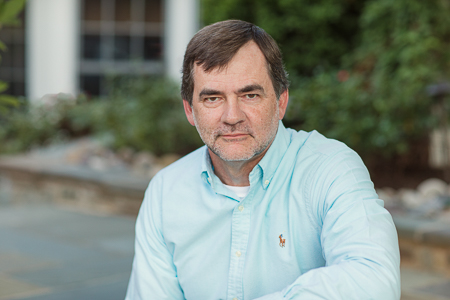Suffer Differently
Suffer Differently
Categories: AACC BLOG
by Curt Thompson, M.D.

Max’s interminable ruminations, always worrying about never getting it right, never being good enough in his career, had the effect of both sweeping him into the fast track of advancement—because of how hard he worked in response to his worry—and leading him to accumulate a life of misery along the way.
Carmina was married to a man who, committed as he was to the tenets of their faith, had no commitment whatsoever to being curious about his inner life or his outer harshness that he frequently directed at her in public, leaving her to a life of longing and languishing, trapped in a dry well of sadness and despair.
Edwin’s autoimmune arthritic condition had, over twenty years, slowly done everything but kill him. He didn’t want to die. But he had a hard time wanting to live.
To be human is to suffer. Indeed, suffering was at the center of the experiences of each of the people whose stories you just read. It was ultimately, in fact, what prompted and escorted them into my office. Moreover, hope felt desperately out of reach, often perceived as a mirage that evaporated anytime any of them was engulfed with the images and sensations of their affliction. But although it was perceived to be beyond them, hope was not completely out of their visual field, or they would not have been speaking with me in the first place. However, it only flitted through their peripheral vision; suffering—and the attendant story that they were telling about it—most often occupied their direct sight line.
Certainly, each person’s suffering is unique to the individual; with a nod to Tolstoy, each of us is unhappy—we suffer—in our own particular way.[1]
As we will eventually see, the question is not if we each suffer. It is, rather, To what degree are we aware of it? and How are we in relationship with and responding to it? These questions reveal not only the story we believe we are living in, but the role that suffering plays in that narrative.
I want to be hopeful. Hopeful that I have agency to diminish my suffering. Because, I admit, I don’t easily comprehend how hope and suffering coexist in my mind and life. But one of the things we will learn over the course of this book is that, from the standpoint of the biblical narrative and in light of what we are discovering about neuroscience, suffering—while not God’s ideal intention—is a necessary element in our becoming our truest, most beautiful, most heaven-ready selves. It is an unavoidable reality of life. One that God plainly does not fully deliver us from in the time frame we would like, if ever.
Moreover, it is a reality that he seems just as plainly committed to using suffering—for reasons that are a great mystery to me—to transform us into who he wants us to become. However, it remains something that I most often choose to avoid if possible instead of accepting it as having anything to do with becoming who I actually long to be.
All of this is both very hard and very good news. It’s easy to imagine why it is hard. But to approach understanding how in any universe it could be good will require what may be a severe overhaul of our imaginations.
I make no promise that we will suffer less. But I am confident that we will suffer differently and will become even more durably hopeful as a result. Primarily, I expect us to come to see that hope is actually a word that, in the world of interpersonal neurobiology, serves as a proxy for an ever-deepening attachment love with Jesus and the commensurate awareness of God’s relational presence of lovingkindness.
Hope—the future state of time that our minds long to occupy—must begin with a relationally grounded, material experience with Jesus mediated through the Spirit, the Scriptures, and, often most powerfully, his body. We become increasingly receptive, experientially and thereby theologically, to our having been justified—declared free of our guilt and shame and welcomed into God’s family—to the degree that we encounter that justification in an embodied fashion, one in which we are ever living into earned secure attachment.[2] Upon this taking place, the prospect of hope—even in the presence of suffering—begins to form in our minds.
Taken from The Deepest Place by Curt Thompson. Copyright © 2023 by Curt Thompson. Used by permission of Zondervan. www.zondervan.com.
References
[1] Leo Tolstoy, Anna Karenina (New York: Penguin, 2000), 1.
[2] Earned secure attachment is that pattern of attachment that one can form as an adult by “making coherent sense” of the parts of one’s story that represent unhealed wounds or unresolved trauma. This is one of the primary goals of all relational healing endeavors. For greater exploration, see Daniel J. Siegel and Mary Hartzell, Parenting from the Inside Out (New York: Tarcher, 2003), 126–27, 143–47.

Inspired by deep compassion for others and informed from a Christian perspective, psychiatrist Curt Thompson, MD shares fresh insights and practical applications for developing more authentic relationships and fully experiencing our deepest longing: to be known.
Through his workshops, speaking engagements, books, organizational consulting, private clinical practice, and other platforms, he helps people process their longings, grief, identity, purpose, perspective of God, and perspective of humanity, inviting them to engage more authentically with their own stories and their relationships. Only then can they feel truly known and connected and live into the meaningful reality they desire to create. Curt and his wife, Phyllis, live outside of Washington DC and have two adult children.
Connect with Dr. Curt Thompson
https://www.instagram.com/curtthompsonmd/
https://twitter.com/curt_thompsonmd
https://www.facebook.com/CurtThompsonMD/
https://www.youtube.com/c/BeingKnownPodcast
